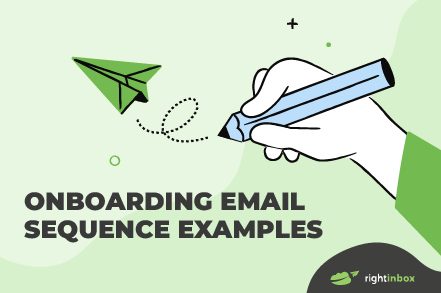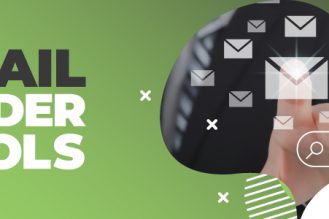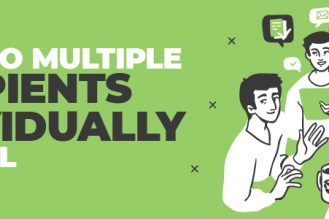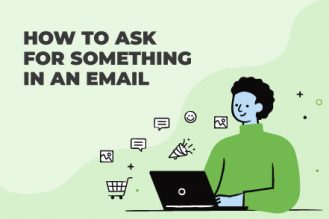An onboarding email sequence is sent to new subscribers to introduce them to your brand and welcome them to in meaningfully.
If you’re not sure how to do that, read along for seven great onboarding email sequences to try out in 2024.
7 Onboarding Email Sequence Examples to Use in 2024
The seven onboarding email sequences you must try in 2024 include:
- Welcome sequence
- Account set-up sequence
- Community-building sequence
- Social proof sequence
- Customer analysis sequence
- Upgrade sequence
- Early re-engagement sequence
Below, we’ve described what these mean and included examples of the first emails from high-performing sequences for your inspiration.
Welcome Sequence
As the name suggests, a welcome sequence simply welcomes new readers to your mailing list. Here’s an example:
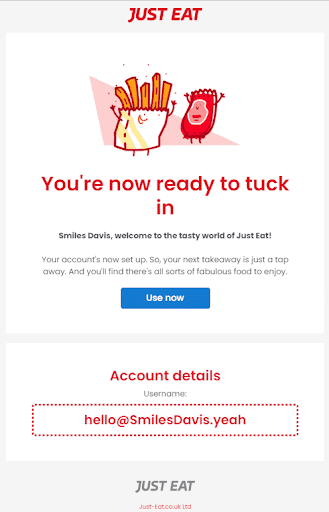
Source:Really Good Emails
This welcome email by Just Eat keeps it short and sweet. It uses a humorous tagline, a fun animated GIF (that you can also add to your emails with Right Inbox), and a warm welcome message to onboard new customers, without being too sales-y.
Account Set-Up Sequence
This sequence not only welcomes new customers onboard but also helps them get started with your service.
It can include messaging that reminds them to complete profile information, set up an account, or manage account preferences. Take a look at how LinkedIn invites new users to complete their profiles.
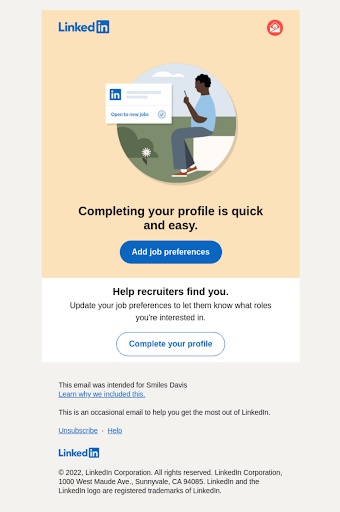
Community-Building Sequence
The goal of a community-building sequence is to build a sense of community around your brand. This email from AllTrails is a great example:
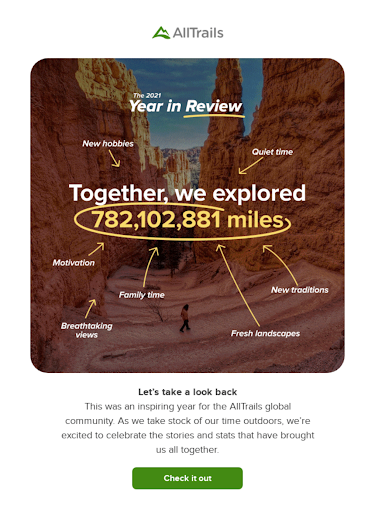
It celebrates a milestone that the AllTrails community has reached together and includes phrases like “brought us all together” to make recipients feel part of a larger group.
Social Proof Sequence
You want to remind new subscribers why your brand does it best. A social proof sequence keeps subscribers up to date on your brand’s success using customer testimonials, award mentions, and consumer or usage numbers. Here is a good example by LastPass:
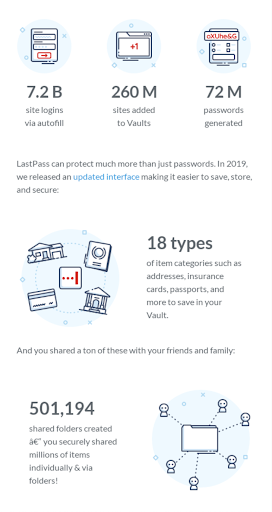
Customer Analysis Sequence
An onboarding sequence can also be used to gather customer analysis insights. This can be through a feedback form or preference survey where you gather data about their preferences, behavior, and needs.
This customer analysis sequence by Tillamook opens with an email that lets users know their feedback is important and invites them to fill out a quick, three-question survey.
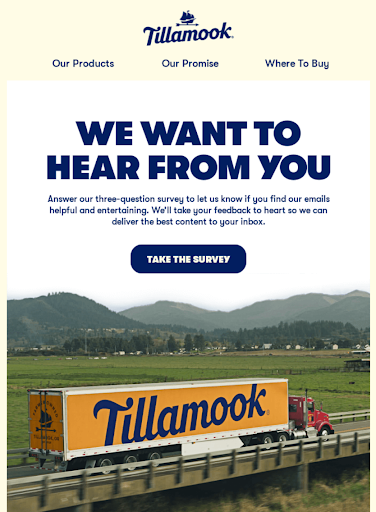
Upgrade Sequence
If you want to onboard free users to a paid product, it’s time to send them an upgrade email. This email sequence should send a gentle reminder for the recipient to upgrade their package, along with what perks they’ll get by doing so.
This upgrade email by Zapier congratulates the recipient on the number of tasks they’ve automated with the free version, reminds them that their free trial is ending soon, and highlights all they’ll miss out on if they fail to upgrade. It conveys a sense of FOMO without being pushy.
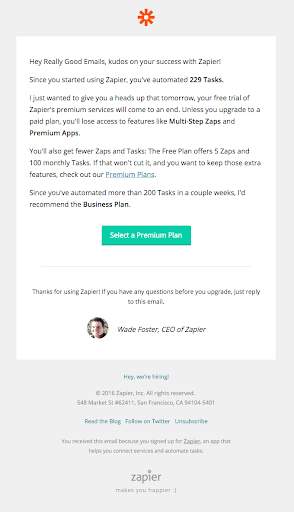
Early Re-Engagement Sequence
An early re-engagement email sequence can onboard inactive users back to your company by telling them about new features. For example, this re-engagement email by Asana uses the app’s latest speed developments to re-attract inactive users.

How to Write a Killer Onboarding Email
A great user onboarding email isn’t just catchy and informative, but also warm and inviting.
Here are five tips to write a killer onboarding email, with examples from world-leading brands to inspire you.
1. Begin With an Attention-Grabbing Subject Line
Your email subject line is the first thing recipients read—and it has to pack a punch.
Write a catchy, actionable subject line that compels readers to click through. The subject line should hint at the email’s contents, but shouldn’t give everything right away.
Here are some examples:
- Welcome to [Company Name]: Here’s Your Free Gift
- Get Started on the Right Foot With [Product/Service Name]
- Your Journey Begins Now: Let Us Guide You Through Our Platform
- Don’t Miss Out: Unlock Exclusive Access for New Subscribers
- Newbie No More: Level up With Our Tips and Tricks
2. Double Down on Your Unique Selling Point
Use your onboarding emails to not only welcome new signups but also lead recipients to your brand’s unique selling point right away. Establish clearly what you offer, why you are the best at it, and drop hints of any future perks to come.
3. Mention the Next Steps
New signups must usually take additional steps to get fully set up with your product and make the most out of the platform. After you remind new customers why they signed up, guide them towards the next steps. This can include completing profile information, making an account, setting preferences, or completing an order.
4. Add in Helpful Information
Once users get started with your app or service, they might run into difficulties. Your onboarding email sequence should include resources and helpful information such as “Get Help” guides, answers to common FAQs, and customer support contact information to reassure them that help is available.
5. End With a Call to Action
Once you’ve demonstrated your platform’s value and provided important information, customers should be eager to get started. Provide a powerful, catchy call-to-action at the end of your email to ensure customers follow through with this interest.
Mastering Onboarding Sequences With the Right Inbox
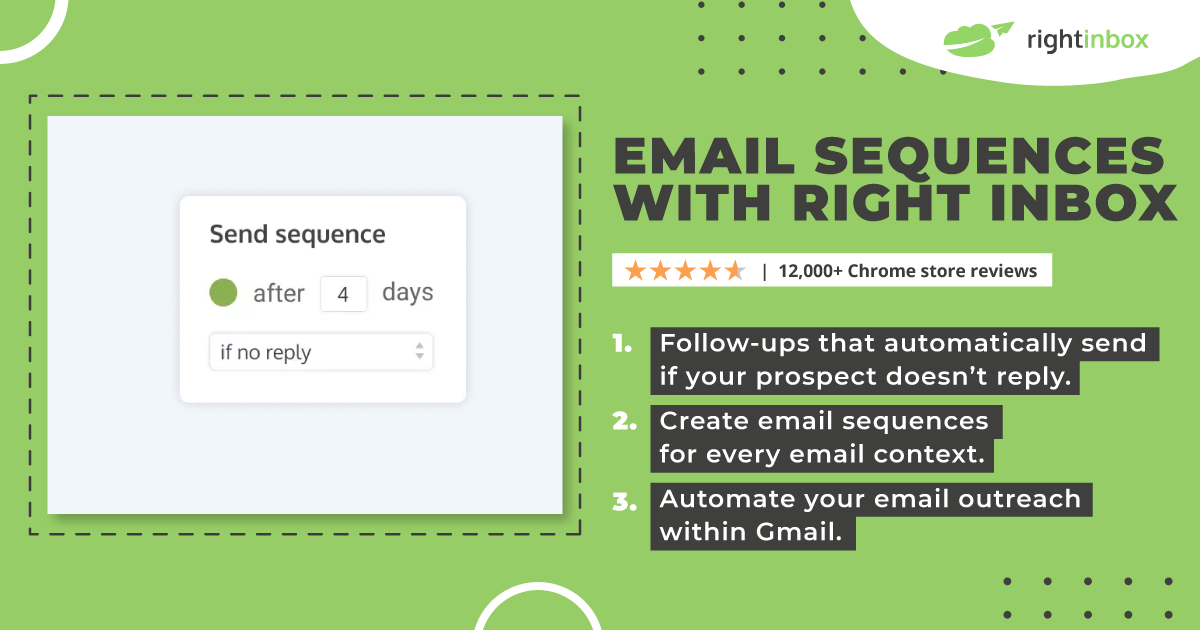
If you’re looking for a way to automate your onboarding sequence, let Right Inbox help you. With its email sequence feature, you can schedule your emails beforehand, let our bot get to work, and focus more on crafting the best onboarding emails.
Plus, you also get a ton of email features, such as private notes, the ability to add GIFs, reminders, mail merge, and more.
Track emails, email reminders & templates in Gmail for free
Upgrade Gmail with the features it’s missing
Add to GmailDavid Campbell
David Campbell is the editor of the Right Inbox blog. He is passionate about email productivity and getting more done in less time.
